#music by dimitri tiomkin
Photo

148. Duelo de Titãs (Last Train from Gun Hill, 1959), dir. John Sturges
#cinema#john sturges#kirk douglas#american movies#1950s movies#classic movies#western#rape and revenge#old west#knocked out#scar#conflict between friends#father son relationship#marshal#music by dimitri tiomkin#cinematography by charles lang#costume design by edith head#cinema icons#cult director#cinefilos
3 notes
·
View notes
Text
Dimitri Tiomkin: Search For Paradise (1957)


An original soundtrack recording for the 1957 Otto Lang film "Search For Paradise".
RCA Victor Records
#my vinyl playlist#dimitri tiomkin#search for paradise#cinerama#rca victor records#50’s music#movie soundtrack#movie score#record cover#album cover#album art#vinyl records
4 notes
·
View notes
Text


The High And The Mighty Music Sheet 1954 Dimitri Tiomkin Vintage || autradingpost
1 note
·
View note
Text
Jester Hairston
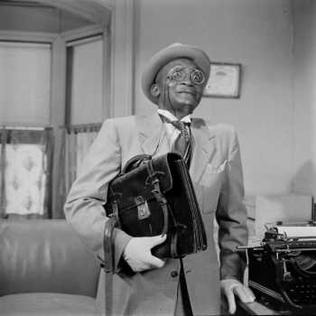
By Life Magazine via Google Images-Photographer Loomis Dean., Fair use, https://en.wikipedia.org/w/index.php?curid=28896923
Jester Joseph Hairston (July 9, 1901 – January 18, 2000) was an American composer, songwriter, arranger, choral conductor and actor. He was regarded as a leading expert on black spirituals and choral music. His notable compositions include "Amen," a gospel-tinged theme from the film Lilies of the Field and a 1964 hit for the Impressions, and the Christmas song "Mary's Boy Child."
Hairston was born in Belews Creek, a rural community on the border of Stokes, Forsyth, Rockingham and Guilford counties in North Carolina. His grandparents had been slaves. At an early age, he and his family moved to Homestead, Pennsylvania, just outside Pittsburgh, where he graduated from high school in 1921. Hairston was very young when his father was killed in a job-related accident. Hairston was raised by his grandmother while his mother worked. Hairston heard his grandmother and her friends talking and singing about plantation life and became determined to preserve this history through music.
Hairston initially majored in landscape architecture at Massachusetts Agricultural College in the 1920s. He became involved in various church choirs and choral groups, and accompanist Anna Laura Kidder saw his potential and became his benefactor. Kidder offered Hairston financial assistance to study music at Tufts University. from which he graduated in 1929. He was one of the first black students admitted to Tufts. Later he studied music at the Juilliard School.
Hairston pledged the Chi chapter of the Kappa Alpha Psi fraternity in 1925. He worked as a choir conductor in the early stages of his career. His work with choirs on Broadway eventually led to singing and acting parts in plays, films, radio programs and television shows.
Hairston sang with the Hall Johnson Choir in Harlem for a time but was nearly fired from the all-black choir because he had difficulty with the rural dialects that were used in some of the songs. He had to shed his Boston accent and relearn the country speech of his parents and grandparents. Johnson had told him: "We're singing ain't and cain't and you're singing shahn't and cahn't and they don't mix in a spiritual." The choir performed in many Broadway shows, including The Green Pastures. In 1936, the choir was asked to visit Hollywood to sing for the film The Green Pastures. Russian composer Dimitri Tiomkin heard Hairston and invited him to what would become a 30-year collaboration in which Hairston arranged and collected music for films. In 1939, Hairston married Margaret Swanigan. He wrote and arranged spirituals for Hollywood films as well as for high school and college choirs around the country.
Hairston wrote the song "Mary's Boy Child" in 1956. He also arranged the song "Amen", which he dubbed for the Sidney Poitier film Lilies of the Field, and arranged traditional Negro spirituals.[16] Most of Hairston's film work was in the field of composing, arranging and choral conducting. He also acted in more than 20 films, mostly in small roles, some uncredited. Hairston starred in John Wayne's The Alamo (1960), in which he portrayed "Jethro," a slave owned by Jim Bowie. In 1962’s To Kill a Mockingbird Hairston portrayed the uncredited role of the father of accused rapist Tom Robinson. In 1967’s In the Heat of the Night, Hairston portrayed the butler of a wealthy racist being investigated for murder. In both films, Hairston shot scenes along side men who won an Academy Award for Best Actor in those respective films for portraying white Southerners navigating their jobs through a racially divided culture.
In 1961, the U.S. State Department appointed Hairston as Goodwill Ambassador. He traveled all over the world teaching and performing the folk music of the slaves. In the 1960s, he held choral festivals with public high-school choirs, introducing them to Negro spiritual music, and sometimes led several hundred students in community performances. His banter about the history of the songs along with his engaging personality and sense of humor endeared him to many students.
During his nationwide travels, Hairston checked local phone books for other Hairstons and reunited many people on his family tree, both black and white. He composed more than 300 spirituals. He was the recipient of many honorary doctorates, including a doctorate from the University of Massachusetts in 1972 and a doctorate in music from Tufts in 1977.
In his later years, Hairston served as a cultural ambassador for American music, traveling to numerous countries with choral groups that he had assembled. In 1985, he took the Jester Hairston Chorale, a multiracial group, to sing in China at a time when foreign visitors would rarely appear there.
Hairston died in Los Angeles of natural causes in 2000 at age 98. For his contribution to the television industry, Hairston has a star on the Hollywood Walk of Fame located at 6201 Hollywood Boulevard. He is interred at Inglewood Park Cemetery, Inglewood, California.
28 notes
·
View notes
Text
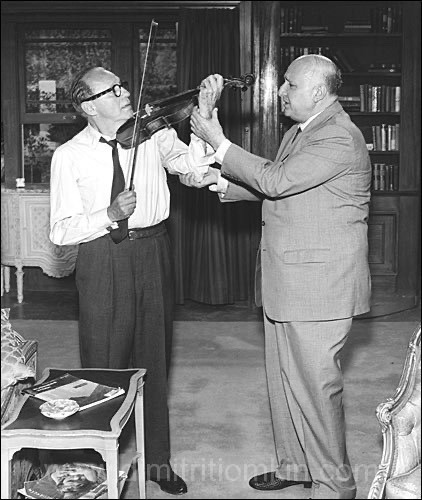
Dimitri Tiomkin giving Jack Benny some musical pointers in 1961.
34 notes
·
View notes
Photo



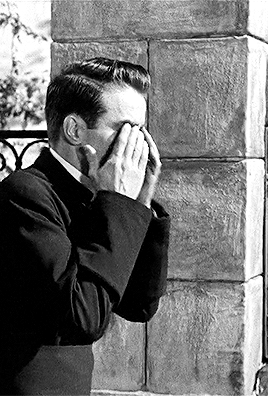
Montgomery Clift in I Confess (Alfred Hitchcock, 1953)
Cast: Montgomery Clift, Anne Baxter, Karl Malden, Brian Aherne, O.E. Hasse, Roger Dann, Dolly Haas, Charles Andre. Screenplay: George Tabori, William Archibald, based on a play by Paul Anthelme. Cinematography: Robert Burks. Art direction: Ted Haworth, John Beckman. Film editing: Rudi Fehr. Music: Dimitri Tiomkin.
I Confess is generally recognized as lesser Hitchcock, even though it has a powerhouse cast: Montgomery Clift, Anne Baxter, and Karl Malden. It also has the extraordinary black-and-white cinematography of Robert Burks, making the most of its location filming in Québec. Add to that a provocative setup -- a priest learns the identity of a murderer in confession but is unable to reveal it even when he is put on trial for the murder -- and it's surprising that anything went wrong. I think part of the reason for the film's weakness may go back to the director's often-quoted remark that actors are cattle. This is not the place to discuss whether Hitchcock actually said that, which has been done elsewhere, but the phrase has so often been associated with him that it reveals something about his relationship with actors. It's clear from Hitchcock's repeat casting of actors like Cary Grant and James Stewart that he was most comfortable directing those he had learned he could trust. Clift's stiffness and Baxter's mannered overacting in this film suggest that Hitchcock felt no rapport with them. But I Confess also played directly into the hands of the censors: The Production Code was administered by Joseph Breen, a devout Catholic layman, and routinely forbade any material that reflected badly on the clergy. In the play by Paul Anthelme and the first version of the screenplay by George Tabori, the priest (Clift) and Ruth Grandfort (Baxter) have had a child together, and the murdered man (Ovila Légaré) is blackmailing them. Moreover, because he is prohibited from revealing what was told him in the confessional and naming the real murderer (O.E. Hasse), the priest is convicted and executed. Warner Bros., knowing how the Breen office would react, insisted that the screenplay be changed, and when Tabori refused, it was rewritten by William Archibald. The result is something of a muddle. Why, for example, is the murderer so scrupulous about confessing to the priest when he later has no hesitation perjuring himself in court and then attempting to kill the priest? No Hitchcock film is unwatchable, but this one shows no one, except Burks, at their best.
gifs: tennant
33 notes
·
View notes
Text
Dread by the Decade: Mad Love
👻 You can support or commission me on Ko-Fi! ❤️
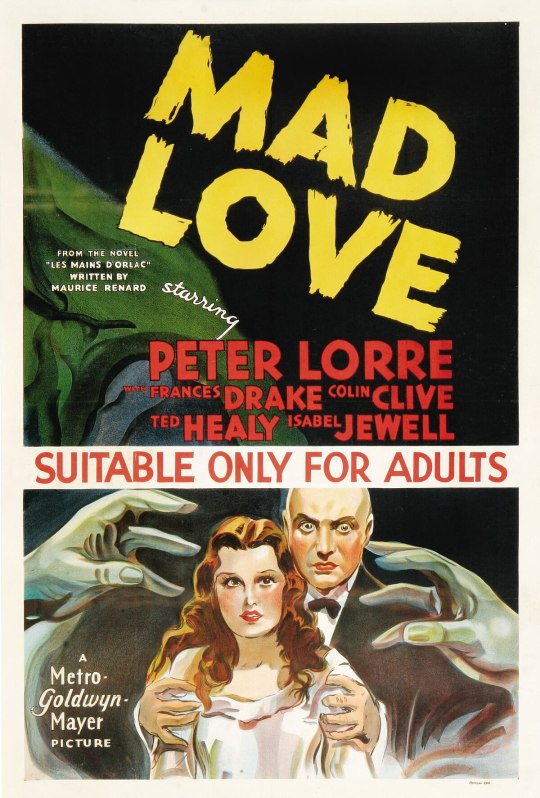
Source Material: Les Mains d'Orlac by Maurice Renard
Year: 1935
Genre: Sci-Fi Horror, Psychological Horror, Body Horror
Rating: UR (Recommended: PG-13)
Country: USA
Language: English
Runtime: 1 hour 8 minutes

Director: Karl Freund
Cinematographers: Chester A. Lyons, Gregg Toland
Editor: Hugh Wynn
Composer: Dimitri Z. Tiomkin
Writers: John L. Balderston, Guy Endore, P.J. Wolfson, Florence Crewe-Jones
Cast: Peter Lorre, Frances Drake, Colin Clive, Ted Healy, Sara Haden

Plot: When her husband's hands are mangled in an accident, a woman seeks help from a doctor who's fixated upon her.
Review: An effectively unsettling tale of obsession and early body horror that, admittedly, forgets a subplot or two along the way.
Overall Rating: 3.5/5

Story: 3/5 - Its ratcheting tension makes up for some issues concerning unanswered questions and a somewhat rushed ending.
Performances: 4/5 - Lorre is an interesting mix of pitiable and unhinged, and Drake is especially likable as the tale’s heroine.
Cinematography: 4.5/5 - Great expressionist-esque work.
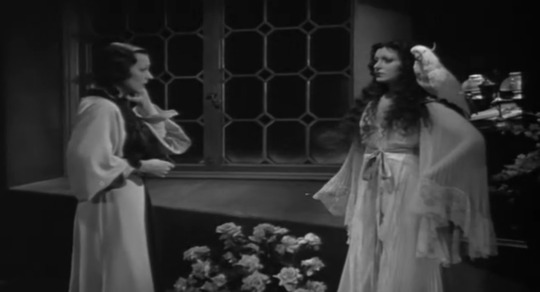
Editing: 4/5
Music: 4/5 - There’s barely any save for a few classic pieces, but they fit well.
Sets: 4/5 - As with the prior adaptation of this story, The Hands of Orloc, the train wreck set is of particular note.
Costumes, Hair, & Make-Up: 4.5/5 - I loved Dr. Gogol (Lorre)’s bizarre, metal disguise.
youtube
Trigger Warnings:
Stalking and gendered violence
Mild violence
4 notes
·
View notes
Text
Dial M for Murder


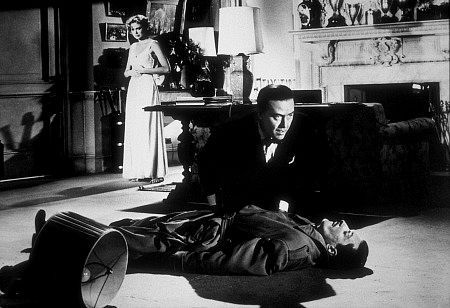
With Jack Arnold’s IT CAME FROM OUTER SPACE (1953), Alfred Hitchcock’s DIAL M FOR MURDER (1954, TCM, Tubi) is one of the only films from the early 3D craze to use the format artistically. Both avoid arbitrarily shoving objects in the audience’s faces (how many of us have nightmares about that damned paddleball in HOUSE OF WAX?). But where Arnold uses 3D to emphasize the vast emptiness of the desert, Hitchcock uses it to underline his film’s claustrophobic action, set almost entirely in the flat shared by retired tennis pro Ray Milland and his heiress wife, Grace Kelly. This account of a jealous husband plotting the perfect crime twice to keep control of his wife’s estate may not be the perfect thriller, but with Hitchcock directing, it’s hard to spot any plot holes (feel free to suggest them in the comments). The only noticeable instance of his shoving something at the audience is Kelly’s outstretched hand as she’s being strangled, and who could object to getting that close to those lovely digits as long as she’s not reaching for an Oscar she didn’t deserve. We’re so used to thinking of Hitchcock in terms of his great, near silent montages it’s a revelation to see how well he breaks up long dialog scenes, particularly Milland’s blackmailing former school chum Anthony Dawson into killing Kelly for him. Milland wisely plays against the villainy of the role. He brings his years of experience doing light comedy to bear on the role, and it works. He’s matched by John Williams’ droll playing as the chief inspector on the case. As Kelly’s secret lover, Robert Cummings has some light romantic moments, but he’s got a little more heavy drama to pull off, and to his credit, he doesn’t overdo it. Kelly’s best moments are silent. She looks delicious, but her big breakdown after the killing has dated badly. There’s a fascinating artificial quality to the film, partly because Hitchcock and Frederick Knott, who wrote the original play and the screenplay, haven’t done much to open up the material. There are some bad process shots on the few exteriors, like Cummings’ arrival by ocean liner, that fit into this. There’s also a cheery quality to Dimitri Tiomkin’s opening title music that seems to be telling us that we’re not about to see anything resembling real life. As a work of artifice, highlighting the plot’s mechanical construction (every important prop is painstakingly planted so even the dimmest audience members can’t miss it), the film seems to suggest that the beauty of the well-made plot is an illusion to disguise the chaotic nature of existence so prevalent in Hitchcock’s films.
2 notes
·
View notes
Text

I do not know the 21st Century Symphony Orchestra and Chorus - boys from the Swiss town Luzern - but it doesn’t matter.
Their album “Western Music”, a live recording of a concert, is a fine anthology of soundtracks for western movies and what could be wrong with that?
Western music must be the “style” of film scores that even people with no interest in film music can recognize and relate to. You hear the broad, sweeping music and you can see horses racing across the open space.
This CD covers both the early composers such as Dimitri Tiomkin and Alfred Newman, the fathers of film music, Bruce Broughton, who revived western music with “Silverado” (Lawrence Kasdan) in the eighties and Ennio Morricone’s work for Sergio Leone’s spaghetti westerns.
That’s 72 minutes of pure pleasure on a CD!
#film music#westerns#soundtrack#soundtracks#film score#movie music#film composer#composer#composers#orchestra#cd#cds#cd collection#cd collector#music#musician#musicians#movie#movies#film#films#luzeren#switzerland#schweiz#anthology#ennio morricone#bruce broughton#dimitri tiomlin#alfred newman
0 notes
Text
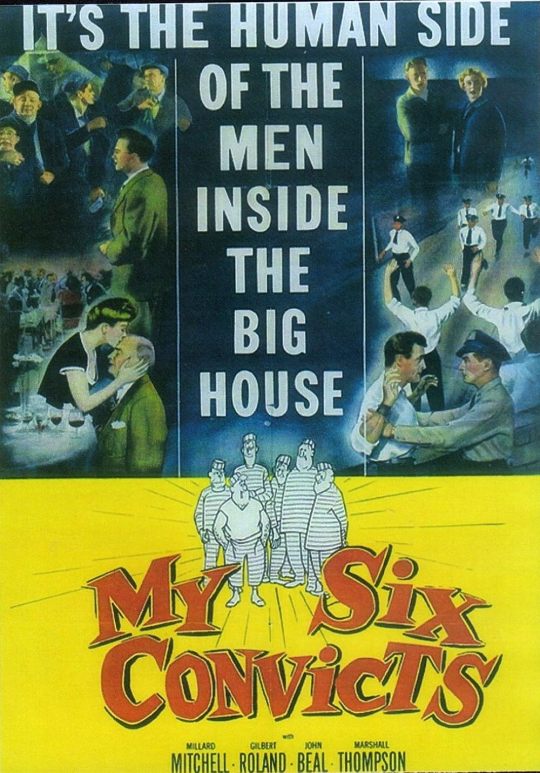
100 Films of 1952
Film number 94: My Six Convicts
Release date: March 20th, 1952.
Studio: Columbia
Genre: comedy/drama
Director: Hugo Fregonese
Producer: Edna and Edward Anhalt
Actors: Millard Mitchell, Gilbert Roland, John Beal, Marshall Thompson
Plot Summary: As part of a prison reform program, a psychologist is assigned a job working with convicts in a state prison. Over time he finds six inmates to help him with his work testing and counseling those incarcerated there.
My Rating (out of five stars): ***
This was a really interesting film because it covered the subject of prison reform and the humanity of the inmates, but it didn’t lay it on thick by becoming overly sentimental. It wasn’t a masterpiece by any means, but it gets points alone for tackling the subject in a very conservative era.
The Good:
The lack of any big-name stars. Normally this might be a hinderance to a film, but in this case, I think it’s a bonus. If Spencer Tracy or Marlon Brando were one of the convicts, I think it would pull the audience out of the story and compromise some of the realism.
John Beal as “the Doc.” I liked him immediately. He has an educated Everyman kind of quality, and he was quite good as an actor as well.
Millard Mitchell as Connie. His is probably the standout performance, because you can’t help but like him, even though he’s a criminal. He is a safe cracker, though, which probably helps, because he seemingly wasn’t a violent criminal. He is a fun character.
The entire supporting cast. Everyone in the cast was highly convincing.
The avoidance of too much sentimentality. There were some emotional moments, but the film generally didn’t milk them too much.
This was basically a B film, but its quality was high. It felt more like a B+ maybe?
This was a generally well-rounded view of inmates- giving them humanity, while also confronting the bad things some did. It definitely humanized the incarcerated.
The lighter tone. Although the subject matter would easily lend itself to a straight drama, it had an entertaining lightness to it at times. The tone really worked for me.
This was actually filmed in San Quentin! The realism with the location was very effective.
The Bad:
The film got a little too episodic at times, moving from one mini-plot to another.
It stretches believability more than once. When the inmates smuggle a guy’s wife in, somehow they smuggle her back out? At one point Connie gets a pass with a guard to crack open a safe on the outside?
There was an Italian character, and every time he had a scene, the music in the background suddenly turned stereotypically Italian sounding. Really guys? We get it. (Dimitri Tiomkin did the score for this- he's pretty legendary, so why he made this choice is beyond me.)
1 note
·
View note
Text
LIVORNO MUSIC FESTIVAL, La grande musica con artisti internazionali e giovani talenti
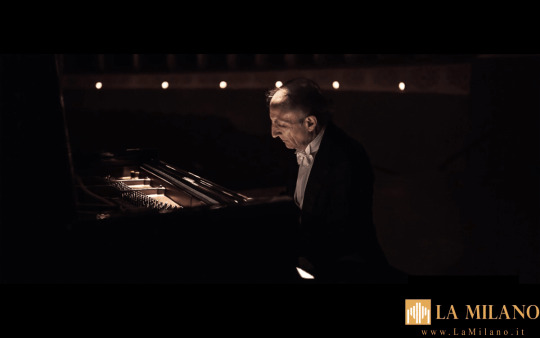
LIVORNO MUSIC FESTIVAL, La grande musica con artisti.
Ad aprire la stagione concertistica del Livorno Music Festival è un programma commissionato per l'occasione a Ilio Barontini. Il pianista livornese, mezzo secolo di carriera (anche con scelte di repertori controcorrente), a lungo docente al "Mascagni, ha arrangiato per la tastiera una serie di memorabili colonne sonore, dai classici Disney a Henry Mancini, Morricone, Piovani, John Williams, attraverso cui ripercorrere idealmente la storia del cinema. Barontini prosegue così la sua esplorazione personale nella musica extracolta che l'ha condotto anche a confrontarsi con pezzi di Battiato e con la canzone italiana d'autore.
Giovedì 17 agosto ore 21: Fortezza Vecchia, MUSIC FOR MOVIES, le indimenticabili colonne sonore nelle versioni pianistiche di Ilio Barontini.
AA.VV. Nel mondo di Walt Disney, medley di Ilio Barontini: Cenerentola (1950) - Gli Aristogatti (1970) - Pinocchio (1940) - Biancaneve e i sette nani (1937) - La bella addormentata nel bosco (1959) - Cam-caminì (Mary Poppins, 1964) - La carica dei 101 (1961) - Un poco di zucchero (Mary Poppins) - Lilli e il vagabondo (1955) - La cattedrale (Mary Poppins) - Dimitri Tiomkin Main Themes (La battaglia di Alamo, 1960) - High Noon (Mezzogiorno di fuoco, 1952)- Ernest Gold Main Theme (Exodus, 1960) - Henry Mancini Moon River (Colazione da Tiffany, 1961) - Harold Arlen Over the Rainbow (Il mago di Oz, 1939) - Sammy Fain Main Theme (L'amore è una cosa meravigliosa, 1955) - Francis Lai Main Theme (Love Story, 1970) - Nino Rota Love Theme (Romeo e Giulietta, 1968) - Michael Nyman The Heart Asks Pleasure First (Lezioni di piano, 1993) - Riz Ortolani Dolce sentire (Fratello sole, sorella luna, 1972) - Nicola Piovani Buongiorno principessa e Main Theme (La vita è bella, 1997) - Ennio Morricone Giù la testa (1971) - Ennio Morricone C'era una volta il West (1968) - Ryūichi Sakamoto Merry Christmas Mr. Lawrence (Furyo, 1983) - John Williams Raiders March (I predatori dell'arca perduta, 1981) - Luis Bacalov Mi mancherai (Il postino, 1994) - Ilio Barontini, pianoforte.
INFO E BIGLIETTI:
€ 10,00: posto unico non assegnato.
Ingresso gratuito: under 12
Con l'acquisto del biglietto del concerto possibilità di apericena a € 10,00 dalle ore 19:30 al Bar Fortezza Vecchia.
I biglietti si possono acquistare in Fortezza Vecchia (Piazzale dei Marmi, 57126 Livorno) il giorno stesso dell'evento a partire dalle ore 19:30.
La prenotazione per i concerti è consigliata e si può effettuare tutti i giorni dalle ore 9 alle 17 via e-mail a [email protected] oppure tramite messaggio Whatsapp o SMS al numero +39 327 9344731 scrivendo nome, cognome, recapito telefonico o e-mail e numero dei partecipanti. In caso di rinuncia, si raccomanda di comunicarlo in utile anticipo.
Per il programma completo dei concerti del Livorno Music Festival (17 agosto - 7 settembre 2023), tutte le informazioni ed eventuali aggiornamenti, vi invitiamo a visitare il sito WWW.LIVORNOMUSICFESTIVAL.COM....
#notizie #news #breakingnews #cronaca #politica #eventi #sport #moda
Read the full article
0 notes
Text

From Silent Films to Cinematic Symphonies
https://spearheadsofgod.com/from-silent-films-to-cinematic-symphonies/?feed_id=302
We're thrilled to present our newest article, hot from the press; we eagerly await your thoughts and hope it provides an engaging and enlightening read for you!
Film scores are an integral part of the cinematic experience, creating mood, emotion, and atmosphere for the audience. Film scores can also enhance the narrative, character, and theme of the film, as well as provide cultural and historical context. But how did film scores evolve from the simple accompaniment of silent films to the complex and diverse symphonies of today? In this article, we will explore the history and development of film music, from its origins to its current trends and challenges.The Origins of Film MusicThe first films were silent, but not soundless. Since the late 19th century, filmmakers used live music to accompany their moving images, either by hiring musicians or using mechanical devices such as phonographs or pianolas. The music served various purposes: it masked the noise of the projector, it provided emotional cues for the audience, and it filled the gaps in the narrative.The earliest film music was not original, but borrowed from existing sources, such as classical music, folk songs, popular tunes, or operas. The choice of music depended on the availability of the musicians, the preference of the exhibitor, and the genre and mood of the film. Sometimes, the music was synchronized with the action on the screen, creating a sense of realism and continuity. Other times, the music was contrasting or ironic, creating a sense of humor or tension.Some filmmakers experimented with more innovative ways of using music in their films. For example, in 1895, the Lumière brothers hired a pianist to play a specific piece for each of their short films https://www.oxfordstudent.com/2017/05/28/brief-history-film-score-lumieres-present-day/. In 1908, Camille Saint-Saëns composed an original score for L'Assassinat du Duc de Guise, one of the first films to have a dedicated composerhttps://www.oxfordstudent.com/2017/05/28/brief-history-film-score-lumieres-present-day/. In 1915, D.W. Griffith commissioned a full orchestral score for his epic The Birth of a Nation, which was synchronized with the film using a system of cue sheetshttps://www.oxfordstudent.com/2017/05/28/brief-history-film-score-lumieres-present-day/.The Golden Age of Film MusicThe advent of sound films in the late 1920s changed the landscape of film music. Sound films allowed filmmakers to record dialogue, sound effects, and music on the same soundtrack, creating a more immersive and realistic experience for the audience. Sound films also enabled filmmakers to use more sophisticated and diverse musical styles and techniques, such as leitmotifs, themes that are associated with specific characters or situations.The golden age of film music is generally considered to span from the 1930s to the 1950s, when Hollywood studios produced some of their most iconic and influential films and film scores. During this period, film composers were influenced by various musical traditions, such as classical music, jazz, folk music, and musical theater. Some of the most prominent film composers of this era were Max Steiner, Erich Wolfgang Korngold, Alfred Newman, Bernard Herrmann, Miklós Rózsa, Dimitri Tiomkin, and Franz Waxman.Some of the characteristics of film music in this period were:• The use of large orchestras and symphonic forms• The use of leitmotifs and thematic development• The use of contrapuntal and chromatic techniques• The use of source music and diegetic music• The use of musical genres and styles that matched the setting and period of the film• The use of musical references and quotations that enhanced the meaning and mood of the filmSome examples of film scores from this period are:• King Kong (1933), composed by Max Steiner. This score is considered one of the first examples
of a fully symphonic film score that used leitmotifs and musical effects to create a sense of drama and suspense.• The Adventures of Robin Hood (1938), composed by Erich Wolfgang Korngold. This score is considered one of the best examples of a swashbuckling film score that used colorful orchestration and melodic themes to create a sense of adventure and romance.• Gone with the Wind (1939), composed by Max Steiner. This score is considered one of the most epic and sweeping film scores that used a variety of musical styles and motifs to depict the historical and emotional saga of the film.• Citizen Kane (1941), composed by Bernard Herrmann. This score is considered one of the most innovative and influential film scores that used modernist and expressionist techniques to create a complex and psychological portrait of the film's protagonist.• Casablanca (1942), composed by Max Steiner. This score is considered one of the most romantic and nostalgic film scores that used source music and original themes to create a sense of mood and atmosphere for the film's setting and characters.• The Bridge on the River Kwai (1957), composed by Malcolm Arnold. This score is considered one of the most ironic and subversive film scores that used musical contrasts and quotations to create a sense of humor and tension for the film's plot and theme.The Modern Era of Film MusicThe 1960s marked a turning point in the history of film music, as filmmakers and composers experimented with new forms and styles of music that challenged the conventions of the classical Hollywood film score. Some of the factors that contributed to this change were:• The rise of new wave cinema and independent filmmaking, which favored more realistic, experimental, and personal films• The influence of popular music and rock music, which appealed to younger and more diverse audiences• The development of new technologies and techniques, such as electronic music, synthesizers, multitrack recording, and digital sound• The emergence of new genres and subgenres, such as science fiction, horror, thriller, comedy, musical, western, and animationSome of the characteristics of film music in this period were:• The use of smaller ensembles and non-orchestral instruments• The use of pop songs and rock music as source music or non-diegetic music• The use of minimalism and repetition as musical devices• The use of atonality and dissonance as musical expressions• The use of eclectic and hybrid musical styles and influences• The use of musical parody and pastiche as musical commentarySome examples of film scores from this period are:• Psycho (1960), composed by Bernard Herrmann. This score is considered one of the most iconic and influential horror film scores that used a string orchestra and dissonant chords to create a sense of terror and suspense.• 2001: A Space Odyssey (1968), directed by Stanley Kubrick. This film is considered one of the most innovative and influential science fiction films that used existing classical music pieces as its soundtrack, creating a contrast between the ancient and the futuristic.• The Graduate (1967), directed by Mike Nichols. This film is considered one of the most influential films of the new Hollywood movement that used pop songs by Simon & Garfunkel as its soundtrack, creating a sense of mood and identity for the film's protagonist.• Star Wars (1977), composed by John Williams. This score is considered one of the most popular and successful film scores that revived the symphonic style and used leitmotifs and thematic development to create a sense of epicness and adventure for the film's galaxy.• The Good, the Bad and the Ugly (1966), composed by Ennio Morricone. This score is considered one of the best examples of a spaghetti western film score that used unconventional instruments, such as electric guitars, whistles, bells, trumpets, and vocals, to create a distinctive sound for the film's setting and characters.The Current Trends and Challenges of Film MusicThe
21st century has seen a continuation and diversification of the trends and styles of film music that emerged in the previous decades. Film composers today have access to a wide range of musical resources, such as orchestras, bands, singers, synthesizers, samplers, computers, software, libraries, etc. Film composers today also have to deal with a wide range of musical demands, such as genre conventions, audience expectations, directorial visions, studio pressures, budget constraints, time limitations, etc.Some of the characteristics of film music today are:• The use of adaptive music and interactive music that can change according to the player's actions or choices in video games or interactive media• The use of sound design and ambient music that can blend with or replace traditional musical elements in films or media• The use of world music and ethnic music that can reflect or contrast with the cultural diversity or specificity in films or media• The use of temp tracks or pre-existing music pieces that can influence or limit the originality or creativity in films or media• The use of remote collaboration or outsourcing that can facilitate or complicate the production or communication in films or mediaSome examples of film scores from today are:• Inception (2010), composed by Hans Zimmer. This score is considered one of the best examples of a modern blockbuster film score that used electronic sounds, brass instruments, percussion instruments, vocals, and a slowed-down version of Edith Piaf's Non, je ne regrette rien as its main theme, creating a connection between the film's plot and the song's lyrics. (https://www.classicfm.com/composers/zimmer/hans-inception-score-guitar-solo/)• The Social Network (2010), composed by Trent Reznor and Atticus Ross. This score is considered one of the best examples of a modern electronic film score that used minimalistic and ambient sounds, as well as distorted and processed instruments, to create a sense of tension and isolation for the film's protagonist.The current trends and challenges of film music show that film composers have to adapt to the changing demands and expectations of the film industry and the audience, as well as to the evolving technologies and techniques of music production and distribution. Film composers have to balance between originality and convention, between artistry and commerce, between innovation and tradition.ConclusionFilm music is a fascinating and complex phenomenon that has evolved over more than a century of cinematic history. Film music can enhance or transform the film experience, creating emotional and intellectual responses in the audience. Film music can also reflect or influence the cultural and historical context of the film, as well as the personal and artistic vision of the filmmaker and the composer.Film music is not a static or homogeneous entity, but a dynamic and diverse one, that can vary according to the genre, style, period, setting, theme, character, and mood of the film. Film music can also vary according to the preferences, expectations, interpretations, and reactions of the audience.Film music is not only a product of the film industry, but also a part of the musical culture, that can interact with other musical forms and genres, such as classical music, popular music, rock music, world music, etc. Film music can also transcend its filmic context and become a musical work in its own right, that can be performed, recorded, distributed, consumed, and appreciated independently of the film.Film music is not only a matter of sound, but also a matter of meaning, that can convey or create messages, symbols, metaphors, associations, references, quotations, etc. Film music can also raise questions or provoke debates about various issues related to film theory, aesthetics, criticism, history, sociology, psychology, etc.Film music is not only an art form but also a science that requires knowledge and skills in various fields such as music theory, composition,
orchestration,
#Articles#filmscorereview#filmscores#filmsoundtrack#musicanalysis#musiccomposition#musiccritique#musicexploration#musicinmovies#musicinterpretation#musictheory#scoreassessment#scoreevaluation#scorereview#soundtrackanalysis#soundtrackbreakdown#soundtrackstudy
0 notes
Text
22-June 散財記録
01(wed)
・Tori Kudo / 休日出勤 (2018, used 7inch)
・Precyz / Precyz (2001, used 2LP)
03(fri)
・Maria Usbeck / Amparo (2016, used LP)
・Eleventeen Eston / Delta Horizon (2014, used LP)
・The Notwist / Pilot (2001, used 12inch)
・Nikki McClure / Godzilla (1996, used 7inch)
・Cosmetic vs Konk / Now N.Y. (1983, used LP)
・Leo Kottke / Mudlark (1971, used LP)
05(sun)
・Fiona Fiasco & Melodiesinfonie / Forever Faking Memoirs (2021, LP)
・どくとる梅津DIVA / DIVA (1988, LP)
08(wed)
・Gina Birch / Feminist Song (2021, 7inch)
・Flitz & Suppe X B-Side / Cycles/Somewhere: One Day (2021, LP)
・Robert Storey / Come Up & Hear My Etchings (2018, LP)
09(thu)
・黒田誠二郎 / まちというまち/化合 (2022, 7inch)
・Spencer Doran / Remixes (2006, used 12inch)
・Young Zee / Stay Gold (1997, used 12inch)
・Μανώλης Γαλιάτσος, Ελένη Βιτάλη, Νίκος Ξυδάκης / Φως Αυγούστου (1989, used LP)
・Cash Money & Marvelous / Play It Cool/Ugly People Be Quiet (1987, used 12inch)
・Indifferent Dance Centre / Flight & Pursuit (1981, used 7inch)
15(wed)
・Aerial M / Post Global Music (1999, used LP)
・Orange Cake Mix / Silver Lining Underwater (The Bliss Out, Vol. 3) (1997, used LP+7 inch)
16(thu)
・三村京子 / 河を渡る (2022, CD)
17(fri)
・Table Sugar / Introductory Material (2016, used LP)
・Islaja / Palaa Aurinkoon (2005, used CD)
・Islaja / Meritie (2004, used CD)
・Orange Cake Mix / Another Orange World (1997, used LP)
・The George Russell Sextet / Electronic Sonata for Souls Loved By Nature - 1980 (1980, used LP)
・Graham Bond / Holy Magick (1970, used LP)
19(sun)
・海辺のニューゴリラ / 宅録デモ集 (2022, CD-R)
24(fri)
・Paco Sala / Ko Yo (2016, used 12inch)
・Soul-Junk / 1951 (1995, used LP)
・Wim Mertens / The Belly of an Architect (1987, used LP)
・The Jazz Corps Under the Direction of Tommy Peltier featuring Roland Kirk / The Jazz Corps (1967, used LP)
・ロジェ・フランス楽団 / 女と男のいる舗道 (1966, used 7inch)
25(sat)
・Alien Parade Japan (2022, 2LP)
・Spirit Fest / Live at Import Export (2022, cassette)
26(sun)
・13 & God / Men of Station (2005, used 12inch)
・3 Mustaphas 3 / Bam! Mustaphas Play Stereo (1985, used 12inch)
・Colin Newman / Provisionally Entitled The Singing Fish (1981, used LP)
30(thu)
・Cave Circles / Apricity (2017, used 12inch)
・Xela / Tangled Wool (2004, used LP)
・Marine Research / Sounds From the Gulf Stream (1999, used LP)
・Dimitri Tiomkin / 36 Hours (1965, used LP)
0 notes
Photo

182. Disque M para Matar (Dial M for Murder, 1954), dir. Alfred Hitchcock
#cinema#alfred hitchcock#grace kelly#anthony dawson#american movies#1950s movies#classic movies#based on play by frederick knott#blackmail#love letter#unfaithful wife#murder#false accusation#plot to murder wife#key#death penalty#film noir in color#alibi#single set production#music by dimitri tiomkin#bafta awards nominee#dga awards nominee#cult director#cinefilos
5 notes
·
View notes
Photo
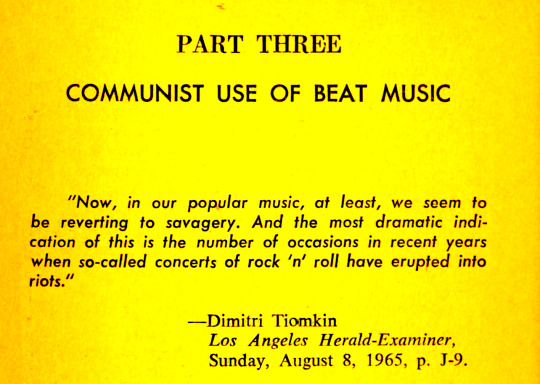
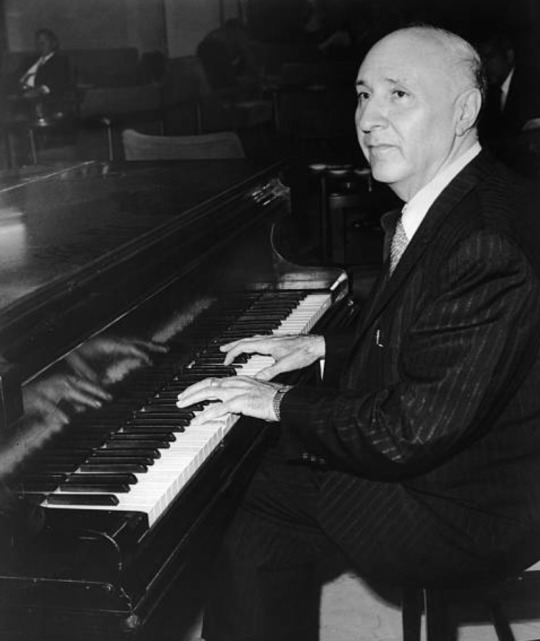
youtube
1965 - Dimitri Tiomkin said popular music was reverting to savagery
21 notes
·
View notes
Text

Dimitri Tiomkin conducts a 75-piece orchestra while recording the theme music for King Vidor’s DUEL IN THE SUN (1946).
15 notes
·
View notes